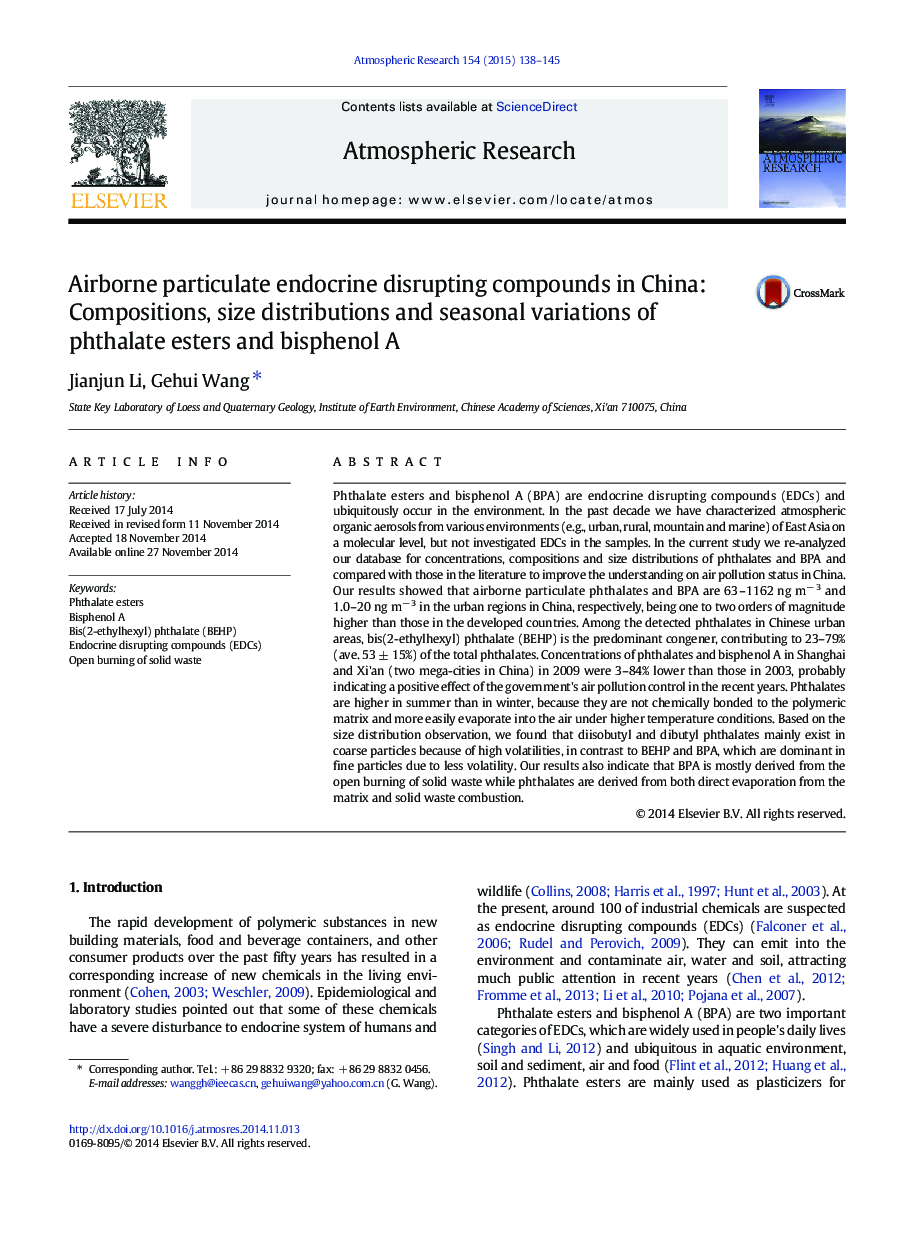| کد مقاله | کد نشریه | سال انتشار | مقاله انگلیسی | نسخه تمام متن |
|---|---|---|---|---|
| 4449853 | 1620519 | 2015 | 8 صفحه PDF | دانلود رایگان |

• Phthalates & BPA are 1–2 orders of magnitude higher in urban than in Asian continental background site.
• Relative abundance of phthalates and BPA are more abundant in the developed cities.
• Different origins of phthalates and BPA
Phthalate esters and bisphenol A (BPA) are endocrine disrupting compounds (EDCs) and ubiquitously occur in the environment. In the past decade we have characterized atmospheric organic aerosols from various environments (e.g., urban, rural, mountain and marine) of East Asia on a molecular level, but not investigated EDCs in the samples. In the current study we re-analyzed our database for concentrations, compositions and size distributions of phthalates and BPA and compared with those in the literature to improve the understanding on air pollution status in China. Our results showed that airborne particulate phthalates and BPA are 63–1162 ng m− 3 and 1.0–20 ng m− 3 in the urban regions in China, respectively, being one to two orders of magnitude higher than those in the developed countries. Among the detected phthalates in Chinese urban areas, bis(2-ethylhexyl) phthalate (BEHP) is the predominant congener, contributing to 23–79% (ave. 53 ± 15%) of the total phthalates. Concentrations of phthalates and bisphenol A in Shanghai and Xi'an (two mega-cities in China) in 2009 were 3–84% lower than those in 2003, probably indicating a positive effect of the government's air pollution control in the recent years. Phthalates are higher in summer than in winter, because they are not chemically bonded to the polymeric matrix and more easily evaporate into the air under higher temperature conditions. Based on the size distribution observation, we found that diisobutyl and dibutyl phthalates mainly exist in coarse particles because of high volatilities, in contrast to BEHP and BPA, which are dominant in fine particles due to less volatility. Our results also indicate that BPA is mostly derived from the open burning of solid waste while phthalates are derived from both direct evaporation from the matrix and solid waste combustion.
Journal: Atmospheric Research - Volume 154, 1 March 2015, Pages 138–145